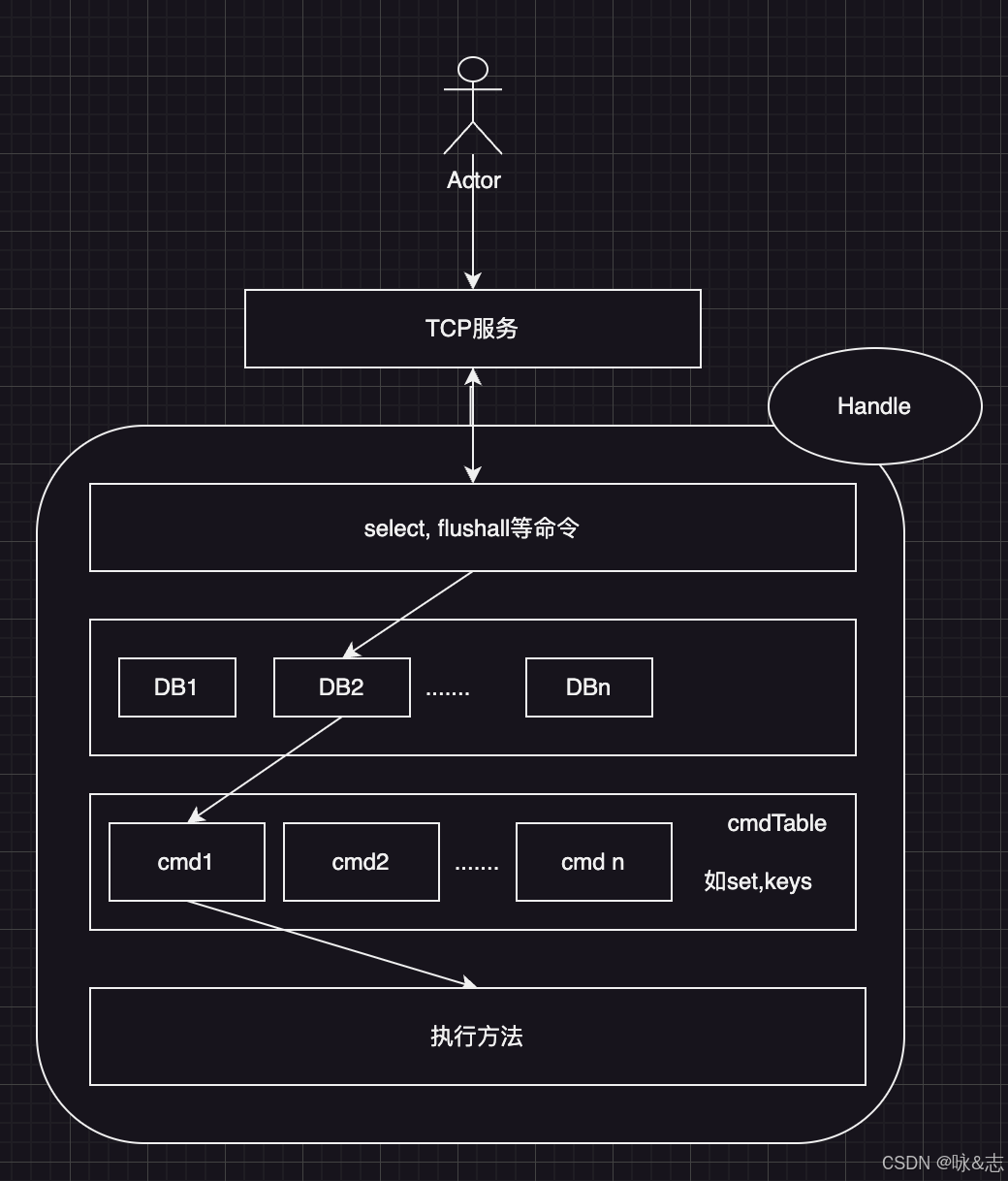目录
一、JWT介绍
二、前端配置
三、后端配置
四、实战
一、JWT介绍
1.1 什么是jwt
JWT(JSON Web Token)是一种开放标准(RFC 7519),用于在各方之间以安全的方式传输信息。JWT 是一种紧凑、自包含的信息载体,可以被解码和验证。它通常用于身份验证和授权服务,特别是在无状态的 Web 应用程序中,比如那些基于 REST 的 API。
1.2 jwt的结构
JWT 由三部分组成,每一部分都由点号(.)分隔开:
-
头部 (Header): 包含关于类型和签名算法的信息。例如:
{"alg":"HS256","typ":"JWT"}这个头部通常表明使用 HMAC SHA-256 算法签名。
-
负载 (Payload): 也称为“声明”(Claims),包含了要传输的信息。这些信息可以是任意的 JSON 数据,但通常包括一些标准的字段,例如:
{"sub":"1234567890","name":"John Doe","admin":true}这里 "sub" 是主题(Subject),"name" 是姓名,"admin" 是权限声明。
-
签名 (Signature): 用于验证数据的完整性和确认发送者的身份。签名是通过一个密钥对头部和负载进行加密得到的。
HMACSHA256(
base64UrlEncode(header) + "." +
base64UrlEncode(payload),
secret
)如果使用非对称加密,则密钥可以是公钥或私钥。
1.3 jwt工作流程
-
创建和签发: 服务器创建一个 JWT,其中包含用户的身份信息和/或其他数据,然后使用一个秘密密钥或私钥对其进行签名。
-
传输: JWT 通过网络发送给客户端,通常作为 HTTP Authorization header 的一部分。
-
验证和使用: 当客户端向服务器发送请求时,它将 JWT 作为身份验证的一部分。服务器验证 JWT 的签名,以确保它没有被篡改,并从中读取信息。
-
过期: JWT 可以设置一个过期时间,在此之后,它将不再有效。
下面将通过Vue + SpringBoot 实现一个jwt鉴权的项目
二、前端配置
2.1 引入axios
npm install axios通过添加前端拦截器配置axios
在src下创建一个utils包,再创建一个axios.js文件
import axios from 'axios';
// 创建axios实例
const instance = axios.create();
// 添加请求拦截器
instance.interceptors.request.use(
function (config) {
// 在这里添加token到请求头
const token = localStorage.getItem('token') || ''; // 从本地存储获取token
if (token) {
config.headers.Authorization = `${token}`;
}
return config;
},
function (error) {
// 请求错误时的处理
return Promise.reject(error);
}
);
export default instance;在main.js中配置应用axios
import axios from './utils/axios';
Vue.prototype.$axios = axios;
2.3 使用axios
在配置全局后,使用axios就并不需要单独引入axios了,直接使用this.$axios即可调用
this.$axios.get('/api/forum/getAllForumPost', {
params: {
pageSize: 1,
pageNumber: 10
}
}).then((response) => {
console.log(response.data.data);
this.posts = response.data.data;
});创建一个TestView.vue测试发送请求时候是否会携带请求头
<template>
<div>
<!-- 测试是否会携带请求头 -->
<button @click="Test"> 发送测试</button>
</div>
</template>
<script>
export default {
data() {
return {
};
},
methods: {
Test(){
// 假设有登录成功后的token
localStorage.setItem('token', '1234567890');
this.$axios.get('/api/Test').then((response) => {
console.log(response.data.data);
});
}
},
};
</script>
在控制台的网络中查看是否有对应的请求头

已经成功携带,并且名称为Authorization

三、后端配置
3.1 引入依赖
<!-- JWT依赖-->
<dependency>
<groupId>io.jsonwebtoken</groupId>
<artifactId>jjwt</artifactId>
<version>0.9.1</version>
</dependency>
<dependency>
<groupId>javax.xml.bind</groupId>
<artifactId>jaxb-api</artifactId>
<version>2.3.0</version>
</dependency>3.3 由于jwt需要三个属性 密钥 有效期 Token的名称
所以需要配置对应的资源类
@Component
@ConfigurationProperties(prefix = "paitool.jwt")
@Data
public class JwtProperties {
private String SecretKey;
private long Ttl;
private String TokenName;
}application.yml:
paitool:
jwt:
secret-key: Alphamilk
ttl: 10800000
token-name: Authorization
3.4 创建配置Jwt的工具类 实现快速创建Jwt与解密Jwt方法
public class JwtUtil {
/**
* 生成jwt
* 使用Hs256算法, 私匙使用固定秘钥
*
* @param secretKey jwt秘钥
* @param ttlMillis jwt过期时间(毫秒)
* @param claims 设置的信息
* @return
*/
public static String createJWT(String secretKey, long ttlMillis, Map<String, Object> claims) {
// 指定签名的时候使用的签名算法,也就是header那部分
SignatureAlgorithm signatureAlgorithm = SignatureAlgorithm.HS256;
// 生成JWT的时间
long expMillis = System.currentTimeMillis() + ttlMillis;
Date exp = new Date(expMillis);
// 设置jwt的body
JwtBuilder builder = Jwts.builder()
// 如果有私有声明,一定要先设置这个自己创建的私有的声明,这个是给builder的claim赋值,一旦写在标准的声明赋值之后,就是覆盖了那些标准的声明的
.setClaims(claims)
// 设置签名使用的签名算法和签名使用的秘钥
.signWith(signatureAlgorithm, secretKey.getBytes(StandardCharsets.UTF_8))
// 设置过期时间
.setExpiration(exp);
return builder.compact();
}
/**
* Token解密
*
* @param secretKey jwt秘钥 此秘钥一定要保留好在服务端, 不能暴露出去, 否则sign就可以被伪造, 如果对接多个客户端建议改造成多个
* @param token 加密后的token
* @return
*/
public static Claims parseJWT(String secretKey, String token) {
// 得到DefaultJwtParser
Claims claims = Jwts.parser()
// 设置签名的秘钥
.setSigningKey(secretKey.getBytes(StandardCharsets.UTF_8))
// 设置需要解析的jwt
.parseClaimsJws(token).getBody();
return claims;
}
}3.5 通过ThreadLocal实现后端存储用户信息
public class BaseContext {
public static ThreadLocal<Long> threadLocal = new ThreadLocal<>();
public static void setCurrentId(Long id) {
threadLocal.set(id);
}
public static Long getCurrentId() {
return threadLocal.get();
}
public static void removeCurrentId() {
threadLocal.remove();
}
}3.6 配置jwt的拦截器
注意:这里的HandlerMehtod是org.springframework.web.method包下的
@Component
@Slf4j
public class JwtTokenInterceptor implements HandlerInterceptor {
@Autowired
private JwtProperties jwtProperties;
/**
* 校验jwt
*
* @param request
* @param response
* @param handler
* @return
* @throws Exception
*/
public boolean preHandle(HttpServletRequest request, HttpServletResponse response, Object handler) throws Exception {
//判断当前拦截到的是Controller的方法还是其他资源
if (!(handler instanceof HandlerMethod)) {
//当前拦截到的不是动态方法,直接放行
return true;
}
//1、从请求头中获取令牌
String token = request.getHeader(jwtProperties.getTokenName());
//2、校验令牌
try {
log.info("jwt校验:{}", token);
Claims claims = JwtUtil.parseJWT(jwtProperties.getSecretKey(), token);
// 获取JWT的过期时间并转换为可读格式
Date expirationDate = claims.getExpiration();
SimpleDateFormat sdf = new SimpleDateFormat("yyyy-MM-dd HH:mm:ss");
String formattedExpiration = sdf.format(expirationDate);
log.info("JWT过期时间:{}", formattedExpiration);
Long userId = Long.valueOf(claims.get("userId").toString());
log.info("当前用户id:", userId);
//通过ThreadLocal保存员工id
BaseContext.setCurrentId(userId);
//3、通过,放行
return true;
} catch (Exception ex) {
//4、不通过,响应401状态码
response.setStatus(401);
return false;
}
}
}
3.7 将配置好的拦截器加入到webMvc配置中(由于本次实战通过用户登陆获取token,记得排除用户登陆时候进行校验的过程)
@Configuration
@Slf4j
public class WebMvcConfig extends WebMvcConfigurationSupport {
@Autowired
private JwtTokenInterceptor jwtTokenInterceptor;
@Override
protected void addInterceptors(InterceptorRegistry registry) {
log.info("开始注册自定义拦截器...");
registry.addInterceptor(jwtTokenInterceptor)
.addPathPatterns("/**")
.excludePathPatterns("/user/login")
.excludePathPatterns("/user/GetCaptcha");
}
四、实战
1.创建User表单
create table paitool.user
(
id int auto_increment
primary key,
account varchar(255) not null,
password varchar(255) not null,
phone varchar(20) null,
address varchar(255) null,
isVip tinyint(1) default 0 null,
email varchar(255) null,
registration_date datetime default CURRENT_TIMESTAMP null,
last_login datetime null,
status enum ('active', 'inactive') default 'active' null,
constraint account_UNIQUE
unique (account),
constraint email_UNIQUE
unique (email),
constraint phone_UNIQUE
unique (phone)
);通过MyBatisPlusX自动生成架构


2.创建返回结果实体类
//结果类
public class Result<T> {
// 状态码常量
public static final int SUCCESS = 200;
public static final int ERROR = 500;
private int code; // 状态码
private String message; // 消息
private T data; // 数据
// 构造函数,用于创建成功的结果对象
private Result(int code, String message, T data) {
this.code = code;
this.message = message;
this.data = data;
}
// 成功结果的静态方法
public static <T> Result<T> success(T data) {
return new Result<>(SUCCESS, "Success", data);
}
// 错误结果的静态方法
public static <T> Result<T> error(String message) {
return new Result<>(ERROR, message, null);
}
// 错误结果的静态方法,可以传入自定义的状态码
public static <T> Result<T> error(int code, String message) {
return new Result<>(code, message, null);
}
// 获取状态码
public int getCode() {
return code;
}
// 设置状态码
public void setCode(int code) {
this.code = code;
}
// 获取消息
public String getMessage() {
return message;
}
// 设置消息
public void setMessage(String message) {
this.message = message;
}
// 获取数据
public T getData() {
return data;
}
// 设置数据
public void setData(T data) {
this.data = data;
}
// 用于转换为Map类型的方法,方便序列化为JSON
public Map<String, Object> toMap() {
Map<String, Object> map = new HashMap<>();
map.put("code", code);
map.put("message", message);
map.put("data", data);
return map;
}
}3.创建验证码(防止密码爆破)工具类 与 Md5加密与解密工具类(防止数据库密码信息泄露)
public class CaptchaUtil {
private static final int WIDTH = 200;
private static final int HEIGHT = 75;
private static final int FONT_SIZE = 36;
private static final String DEFAULT_FONT = "Arial";
/**
* 生成验证码图像.
*
* @param captchaText 验证码原始文本
* @return Base64编码的图像字符串
*/
public static String generateCaptchaImage(String captchaText) {
if (captchaText == null || captchaText.isEmpty()) {
throw new IllegalArgumentException("Captcha text cannot be null or empty.");
}
// 创建图像和图形上下文
BufferedImage image = new BufferedImage(WIDTH, HEIGHT, BufferedImage.TYPE_INT_RGB);
Graphics2D g = (Graphics2D) image.getGraphics();
// 设置背景颜色
g.setColor(Color.WHITE);
g.fillRect(0, 0, WIDTH, HEIGHT);
// 绘制验证码文本
g.setFont(new Font(DEFAULT_FONT, Font.BOLD, FONT_SIZE));
g.setColor(getRandomColor());
g.drawString(captchaText, 45, 50);
// 添加随机线条作为干扰
addNoiseLines(g);
// 关闭图形上下文
g.dispose();
// 将图像转换为Base64编码的字符串
try (ByteArrayOutputStream baos = new ByteArrayOutputStream()) {
ImageIO.write(image, "png", baos);
return Base64.getEncoder().encodeToString(baos.toByteArray());
} catch (Exception e) {
throw new RuntimeException("Error generating captcha image", e);
}
}
private static void addNoiseLines(Graphics2D g) {
for (int i = 0; i < 5; i++) {
g.setColor(getRandomColor());
g.drawLine(
getRandomNumber(WIDTH),
getRandomNumber(HEIGHT),
getRandomNumber(WIDTH),
getRandomNumber(HEIGHT)
);
}
}
private static Color getRandomColor() {
return new Color((int) (Math.random() * 255),
(int) (Math.random() * 255),
(int) (Math.random() * 255));
}
private static int getRandomNumber(int bound) {
return (int) (Math.random() * bound);
}
}public final class MD5Util {
/**
* 使用MD5算法对字符串进行加密。
*
* @param input 待加密的字符串
* @return 加密后的MD5散列值字符串
*/
public static String encryptToMD5(String input) {
try {
MessageDigest md = MessageDigest.getInstance("MD5");
byte[] hashInBytes = md.digest(input.getBytes());
// 将字节数组转换成十六进制字符串
StringBuilder sb = new StringBuilder();
for (byte b : hashInBytes) {
sb.append(String.format("%02x", b));
}
return sb.toString();
} catch (NoSuchAlgorithmException e) {
throw new RuntimeException("MD5 algorithm not found", e);
}
}
public static void main(String[] args) {
String originalString = "Hello World";
String encryptedString = encryptToMD5(originalString);
System.out.println("Original: " + originalString);
System.out.println("Encrypted: " + encryptedString);
}
}
4.创建数据传输与视图的实体类
登陆时候,前端传入数据
@Data
public class LoginDTO {
private String account;
private String password;
// 验证码
private String captcha;
}验证通过后传给前端的数据
@Data
public class loginVo {
private Integer id;
private String account;
private Integer isvip;
private Object status;
private String token;
}4.UserController实现登陆功能
@RestController
@Slf4j
@RequestMapping("/user")
public class UserController {
@Autowired
UserService userService;
@Autowired
private JwtProperties jwtProperties;
// 登陆时候获取验证码
@ApiOperation("获取验证码功能")
@GetMapping("/GetCaptcha")
public String GetCaptcha(HttpSession session) {
// 随机生成四位验证码原始数据
String allowedChars = "0123456789abcdefghijklmnopqrstuvwxyzABCDEFGHIJKLMNOPQRSTUVWXYZ";
String randomString = generateRandomString(allowedChars, 4);
System.out.println("captchaCode " + randomString);
// 将验证码保存到session中
session.setAttribute("captcha", randomString); // 使用方法参数session
String ImageByBase64 = CaptchaUtil.generateCaptchaImage(randomString);
return ImageByBase64;
}
// 实现登陆功能
@ApiOperation("用户登陆功能")
@PostMapping("/login")
public Result<loginVo> Login(@RequestBody LoginDTO loginDTO, HttpSession session) { // 使用同一个HttpSession参数
String captcha = (String) session.getAttribute("captcha");
log.info("用户调用login方法");
if (loginDTO.getCaptcha() == null || !loginDTO.getCaptcha().equalsIgnoreCase(captcha)) {
session.removeAttribute("captcha");
return Result.error("验证码出错了噢!");
}
// 对密码进行md5加密
String encryptToMD5 = MD5Util.encryptToMD5(loginDTO.getPassword());
LambdaQueryWrapper<User> lambdaQueryWrapper = new LambdaQueryWrapper<>();
lambdaQueryWrapper.eq(User::getAccount, loginDTO.getAccount())
.eq(User::getPassword, encryptToMD5);
User user = userService.getOne(lambdaQueryWrapper);
if (user == null) {
return Result.error("很抱歉,查不到此用户");
}
loginVo loginVo = new loginVo();
BeanUtils.copyProperties(user,loginVo);
Map<String,Object> claims = new HashMap<>();
claims.put("userId",user.getId());
String token = JwtUtil.createJWT(jwtProperties.getSecretKey(), jwtProperties.getTtl(), claims);
loginVo.setToken(token);
return Result.success(loginVo);
}
}前端账户操作View.vue:
<template>
<div id="Header">
<h3>--PaiTool--</h3>
<div class="header-avatar">
<el-popover placement="bottom" :visible-arrow="false" :visible.sync="showUserInfo">
<div class="userInfo">
<p>用户名:{{ account }}</p>
<p>邮箱:{{ email }}</p>
<p>是否是vip: {{ isVip }}</p>
<p>账号状态:{{ status }}</p>
<!-- 登录按钮 -->
<el-button type="primary" @click="showDialog">登录/注册</el-button>
<!-- 退出按钮 -->
<el-button type="text" @click="confirmQuit">退出</el-button>
<!-- 登录对话框 -->
<el-dialog title="登录与注册" :visible.sync="dialogLoginVisible" width="30%" @close="resetLoginForm" append-to-body
:modal-append-to-body="false">
<el-tabs v-model="activeName" @tab-click="handleClick">
<el-tab-pane label="登陆" name="first">
<el-form :model="loginForm" ref="loginFormRef" label-width="80px">
<el-form-item label="用户名:">
<el-input v-model="loginForm.account"></el-input>
</el-form-item>
<el-form-item label="密码:">
<el-input v-model="loginForm.password" show-password></el-input>
</el-form-item>
<el-form-item label="验证码">
<el-input v-model="loginForm.captcha" style="width: 20%;"></el-input>
<img :src="captchaImageUrl" alt="验证码" @click="refreshCaptcha" id="captchaImage">
</el-form-item>
</el-form>
</el-tab-pane>
<el-tab-pane label="注册" name="second">
<el-form :model="loginForm" ref="registerFormRef" label-width="80px">
<el-form-item label="注册用户:">
<el-input v-model="registerFormRef.account"></el-input>
</el-form-item>
<el-form-item label="注册密码:">
<el-input v-model="registerFormRef.password" show-password></el-input>
</el-form-item>
<el-form-item label="验证码">
<el-input v-model="registerFormRef.captcha" style="width: 20%;"></el-input>
<img :src="captchaImageUrl" alt="验证码" @click="refreshCaptcha" id="captchaImage">
</el-form-item>
</el-form>
</el-tab-pane>
</el-tabs>
<span slot="footer" class="dialog-footer">
<el-button @click="dialogLoginVisible = false">取消</el-button>
<el-button type="primary" @click="submitLogin">登录|注册</el-button>
</span>
</el-dialog>
<!-- 退出确认对话框 -->
<el-dialog title="确认退出" :visible.sync="dialogConfirmVisible" width="30%" @close="dialogConfirmVisible = false"
append-to-body :modal-append-to-body="false">
<span>您确定要退出吗?</span>
<span slot="footer" class="dialog-footer">
<el-button @click="dialogConfirmVisible = false">取消</el-button>
<el-button type="primary" @click="quit">确定退出</el-button>
</span>
</el-dialog>
</div>
<el-avatar slot="reference" :src="circleUrl" :size="40" class="clickable-avatar"></el-avatar>
</el-popover>
</div>
</div>
</template>
<script>
import axios from 'axios';
import Cookies from 'js-cookie';
export default {
data() {
return {
showUserInfo: false, // 控制个人信息弹窗的显示状态
circleUrl: "https://cube.elemecdn.com/3/7c/3ea6beec64369c2642b92c6726f1epng.png",
isVip: '否',
account: '未登录',
status: '正常',
email: 'none',
activeName: 'first',
loginOrRegistFlag: true,
dialogLoginVisible: false,
dialogConfirmVisible: false,
loginForm: {
username: '',
password: '',
},
registerFormRef: {
username: '',
password: '',
},
captchaImageUrl: '', // 初始化为一个空字符串
}
},
mounted() {
this.loadUserDataFromCookie();
},
methods: {
loadUserDataFromCookie() {
// 从cookie中读取account
const account = Cookies.get('account');
if (account) {
this.account = account;
}
// 从cookie中读取isVip
const isVip = Cookies.get('isVip');
if (isVip !== undefined) {
// 注意:从cookie读取的数据是字符串类型,需要转换成布尔型
this.isVip = isVip === 'true';
}
// 从cookie中读取status
const status = Cookies.get('status');
if (status) {
this.status = status;
}
// 从cookie中读取email
const email = Cookies.get('email');
if (email) {
this.email = email;
}
},
// 打开登录对话框
open() {
this.dialogLoginVisible = true;
},
resetLoginForm() {
this.$refs.loginFormRef.resetFields();
},
// 提交登录
submitLogin() {
// 判断是注册还是登录
if (this.loginOrRegistFlag == true) {
// 这里添加验证逻辑(如果需要)
console.log('登录表单提交:', this.loginForm);
this.dialogLoginVisible = false;
// 将this.loginForm作为参数上传
axios.post("/api/user/login", this.loginForm)
.then(response => {
console.log(response.data);
if (response.data.code === 500) {
// 重新获取验证码
this.refreshCaptcha();
this.$message.error(response.data.message);
} else if (response.data.code === 200) {
this.$message({
showClose: true,
message: '登陆成功!',
type: 'success'
});
// 设置cookie,可以设置过期时间
Cookies.set('account', response.data.data.account, { expires: 7 });
Cookies.set('isVip', response.data.data.isVip, { expires: 7 });
Cookies.set('status', response.data.data.status, { expires: 7 });
Cookies.set('email', response.data.data.email, { expires: 7 });
Cookies.set('userId', response.data.data.id, { expires: 7 })
localStorage.setItem('token', response.data.data.token);
this.account = response.data.data.account;
this.isVip = response.data.data.isVip;
this.status = response.data.data.status;
this.email = response.data.data.email;
}
})
.catch(error => {
// 处理错误响应
console.error('登录失败:', error);
this.$message.error('登陆错了哦,这是一条错误消息')
});
} else {
axios.post('/api/user/register', this.registerFormRef).then(response => {
if (response.data.code === 200) {
this.$message({
showClose: true,
message: '注册成功!',
type: 'success'
});
this.dialogLoginVisible = false;
} else {
this.$message.error(response.data.message);
}
});
}
},
// 打开退出确认对话框
confirmQuit() {
this.dialogConfirmVisible = true;
},
// 执行退出操作
quit() {
// 这里执行实际的退出逻辑
console.log('执行退出操作');
this.dialogConfirmVisible = false;
// 将Cookie所有字段删除
Cookies.remove('account');
Cookies.remove('isVip');
Cookies.remove('status');
Cookies.remove('email');
Cookies.remove('userId');
this.account = '未登录';
this.isVip = '否';
this.status = '离线';
this.email = 'none';
this.$message({
showClose: true,
message: '退出成功!',
type: 'success'
});
},
// 刷新验证码的示例函数
refreshCaptcha() {
// 实现刷新验证码的逻辑
console.log('刷新验证码');
this.fetchCaptcha();
},
fetchCaptcha() {
axios.get('/api/user/GetCaptcha')
.then(response => {
this.captchaImageUrl = 'data:image/png;base64,' + response.data;
})
.catch(error => {
console.error('获取验证码失败:', error);
});
},
showDialog() {
this.fetchCaptcha(); // 先获取验证码
this.dialogLoginVisible = true; // 然后显示登录对话框
},
handleClick(tab) {
if (tab.name === 'first') {
this.loginOrRegistFlag = true;
} else {
this.loginOrRegistFlag = false;
}
}
}
}
</script>
<style scoped>
h3 {
color: #E9EEF3;
float: left;
width: 1307px;
height: 60px;
margin-left: 15%;
}
.header-avatar {
position: relative;
/* 为绝对定位的子元素提供上下文 */
float: right;
z-index: 1000;
/* 设置一个较高的 z-index 值以确保其位于其他元素之上 */
margin-top: 10px;
}
.clickable-avatar {
/* 添加点击手势效果 */
cursor: pointer;
}
.userInfo {
text-align: left;
padding: 10px;
}
#captchaImage {
cursor: pointer;
width: 136px;
height: 45px;
border: 1px solid black;
float: right;
margin-right: 54%;
}
</style>数据库创建用户与(123456)加密后的密码
account: admin
password: e10adc3949ba59abbe56e057f20f883e
进入前端并进行登陆

查看返回结果的token,前端的login函数已经自动存入了token中了

使用其它功能,查看是否有效

这里看到,后端正常识别到并解析出来了。



















